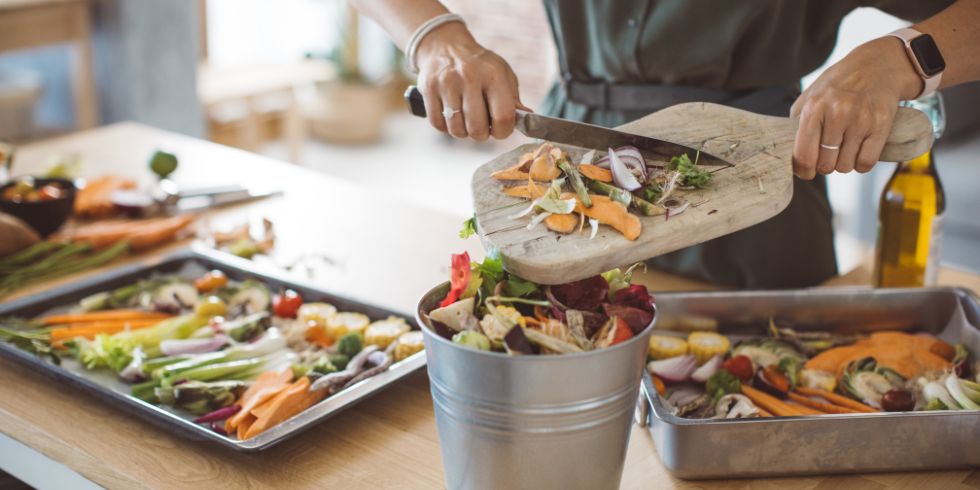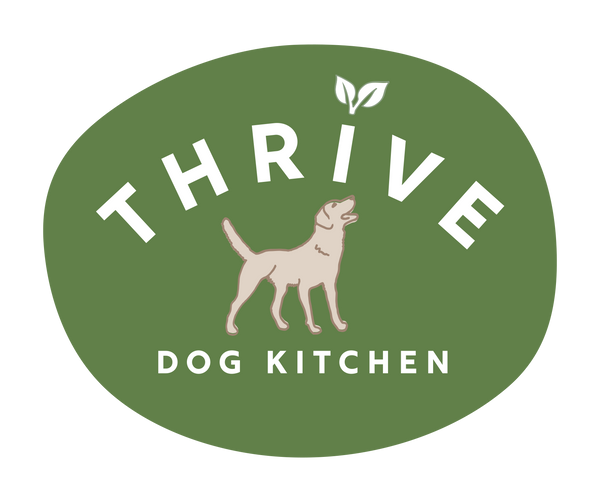
Vegetable and Fruit Scraps for Dogs: The Health Benefits
Share
Did you know that only 10% of a broccoli plant is used for human consumption? The rest—leaves, stalks, and stems—is considered waste. But instead of letting all that good stuff go to waste (literally), there’s a healthier, more eco-friendly option: feeding it to your dog!
In fact, researchers around the world are exploring the value of plant waste as a nutritious source for animal feed. A study from Oman Nutritional Value of Vegetable Wastes as Livestock Feed highlights how plant by-products can serve as valuable animal feed, reducing food waste while improving animal health. While the study focused on livestock, the same principles apply to dogs—vegetable and fruit scraps can provide a range of essential nutrients for your furry family member, boosting their health while minimising waste.
Whether or not you compost, there's another great way to put your veggie and fruit scraps to good use: feed them to your dog! While composting has its environmental benefits, using these nutrient-packed by-products for your dog offers a win-win solution, especially for those without the space or time to compost. By feeding your dog healthy scraps, you're not only reducing food waste but also giving them a natural nutritional boost. Here’s how you can turn kitchen leftovers into a win for both your dog and the planet.
The Health Benefits
Feeding your dog leftover veggie and fruit scraps is not just cost-effective—it’s an easy and fantastic way to boost their health. These often-discarded parts of plants are packed with:
- Antioxidants: These powerful substances protect your dog’s cells from oxidative damage, keeping them healthier for longer.
- Phytonutrients: Plant chemicals that offer a range of health benefits, including antioxidant properties, helping to fight disease and promote overall well-being.
- Vitamins: Especially water-soluble vitamins like B and C, which support your dog’s immune system, energy levels, and more.
- Minerals: Essential elements like potassium, magnesium, and calcium help maintain your dog’s overall health, from strong bones to a healthy heart.
- Fibre: Crucial for gut health, fibre promotes a balanced microbiome, which is key to good digestion and immune support.
Environmental Benefits: Reducing Food Waste
From an environmental perspective, feeding scraps to your dog instead of throwing them away or composting them reduces the amount of perfectly edible food. In fact, about 90% of the broccoli plant goes unused for human consumption. That same study from Oman found that repurposing plant waste for livestock not only reduced environmental impact but also provided valuable nutrition. By applying this concept to our dogs, we can help minimise waste and contribute to a more sustainable future. Instead of throwing out nutrient-rich scraps like carrot tops or broccoli stalks, why not use them to nourish your dog?
Which Scraps Should You Save?
Here are some ideas for the types of scraps you can feed your dog. These are often nutrient-dense and perfect for adding to their meals:
- Carrot, kumara, and cucumber skins
- Broccoli stalks
- Outer leaves of cabbage, cauliflower, and broccoli
- Tops of carrots and beetroots
- Celery leaves
- Limp or slightly wilted vegetables
- Fruit skins
- Slightly browned fruits
Scraps to Avoid
Remember to avoid these common scraps, as they can be harmful to dogs:
- Onions, chives, and leeks
- Grapes (and raisins)
Quick Tips for Feeding Scraps to Your Dog
- Make It Easy: Set up a container in your kitchen for scraps specifically for your dog, separate from your compost bin. Keep it in the freezer to lock in the nutrients until you’re ready to use the scraps.
- Prep for Maximum Nutrition: Rinse scraps thoroughly, especially if they’re not organic or spray-free, to remove any pesticide residue.
- Blend for Maximum Absorption: Use a blender or food processor to finely chop the scraps, making it easier for your dog to absorb all the nutrients.
- Portion it Out: Add a spoonful of the mixture to your dog’s meals, and store the rest in the fridge. Use within 5 days, or freeze into moulds for future meals.
By incorporating vegetable and fruit scraps into your dog’s diet, you’re not only enhancing their health but also making a positive impact on the environment by reducing food waste. Give it a try, and let us know how your dog enjoys the new additions to their meals!
